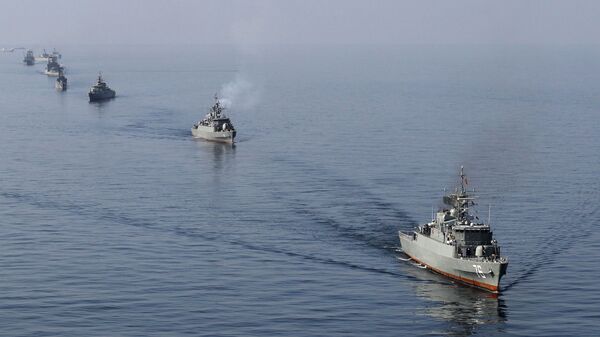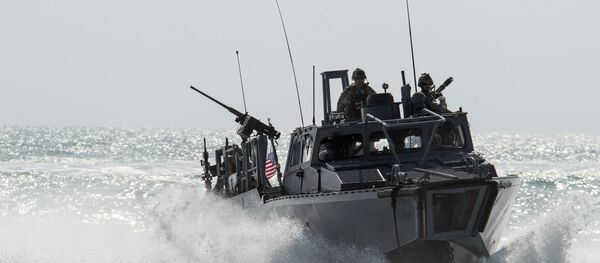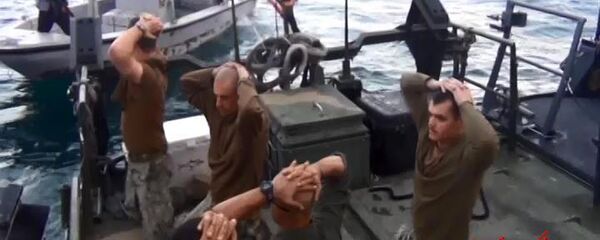Commander Sayyari noted that the naval initiatives were being undertaken to keep merchant vessels secure from pirate forces and to protect naval routes, especially after Somali pirates hijacked an Iranian cargo ship bound for Yemen in November 2008. He suggested that construction will also take place as tensions between Tehran and Washington escalate.
There were 23 encounters between Iranian and American vessels last year, with seven of Tehran’s fast attack watercraft approaching the USS Firebolt in September, nearly colliding with the coastal patrol ship.
Captain Jeff Davis, Pentagon spokesman, said the vessel was "harassed" before changing course, and an unnamed US Defense official called the incident "unsafe and unprofessional due to lack of communications and the close-range harassing maneuvering,” adding, "We don't see this type of unsafe and unprofessional activity from any other nation."
An international incident nearly ensued in January when ten US sailors were captured after their boats entered Iranian territorial waters in January. They were released about 15 hours later, and the US Navy blamed the incident on a lack of judgement due to poor leadership.
"Crewmembers lacked navigational awareness, proper communication with higher authority, and appreciation of the threat environment throughout the transit," according to a report the service released at the time.
As a result, Commander Eric Rasch, who was the executive officer of Coastal Riverine Squadron 3 at the time of the incident, was relieved of his duties and reassigned because of a "loss of confidence" in his leadership ability.
Tehran’s Navy announced in September that it was in possession of a "suicide drone" that can "can carry payloads of explosives for combat missions" and "collide with the target and destroy it, (whether) a vessel or an onshore command center" according to Iran’s Tasnim News Agency.
Tasnim reports that the small, unmanned vehicle is not designed to carry missiles, but has a range of roughly 600 miles, can fly as high as 3,000 feet and can stay airborne for up to four hours.




